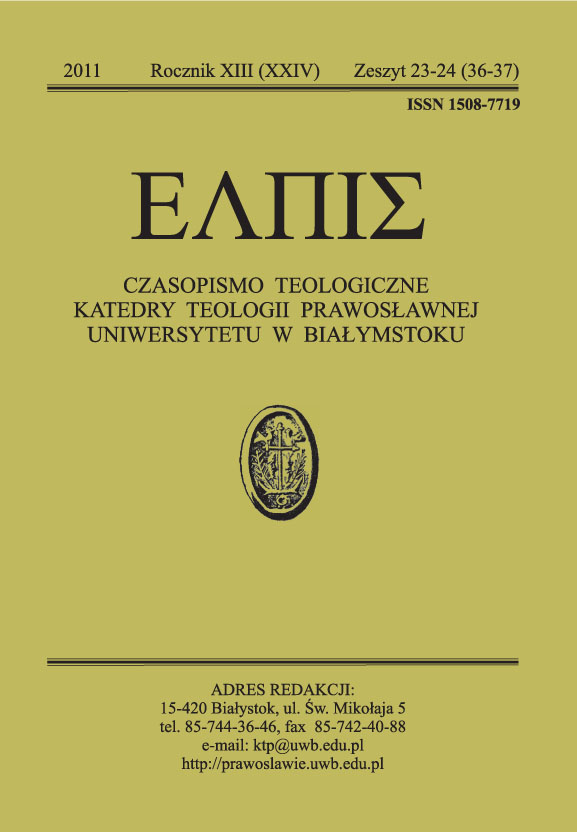Monastery diecezji turowsko-pińskiej w XVI wieku
DOI:
https://doi.org/10.15290/elpis.2011.13.10Słowa kluczowe:
życie monastyczne, diecezja turowsko-pińska, KościółprawosławnyAbstrakt
The history of the diocese of Turov and Pinsk until the end of the XVI century reflects the fate of the Orthodox Church in the Commonwealth. The development of the bishopric founded in 1088 passed through several stages resulting from often violent political, administrative and state changes. The prosperous period in the evolution of the Church structures on the territory of the discussed eparchy lasted until the end of the XII century. Under the rule of SviatopolkII (1087–1113) the diocese of Turov encompassed vast territories of the Ruthenian lands with the following towns: Turov, Pinsk, Brest, Kamenets, Kleck, Slutsk, Gorodno, Haradok (later Davyd-Haradok), Zditov, Nobel, Dubrovitsa, Kapyl, Liahavichy, Sniatyn, Drohiczyn upon Bug and Vawkavysk. Therefore the eparchy encompassed the area from the Lower Beresina and Dnepr in the east to Bug (on the side of Prypiat) in the west, from Kleck in the north to Lutsk, Dubrovitsa, Stepan and Chortoryisk in the south. For the principality of Turov it was the period of its greatest development and political importance. During that period first schools were founded, the art of icon painting developed as well as church architecture. Still the diocese of Turov depended too much on the political events. All political and Church changes influenced the situation in the principality of Turov.Downloads
Pobrania
Opublikowane
Jak cytować
Numer
Dział
Licencja
Prawa autorskie (c) 2014 Elpis

Utwór dostępny jest na licencji Creative Commons Uznanie autorstwa – Użycie niekomercyjne – Na tych samych warunkach 4.0 Międzynarodowe.
Szczegółowe warunki licencji CC BY-SA (Uznanie autorstwa - Na tych samych warunkach) dostępne jest na stronie Creative Commons - link.
Autor musi wypełnić i przesłać na adres redakcji (elpis@uwb.edu.pl) uzupełnioną i podpisaną umowę autorską wraz z oświadczeniem o oryginalności artykułu i wkładzie autora w powstanie artykułu. Plik umowy do pobrania: TUTAJ









